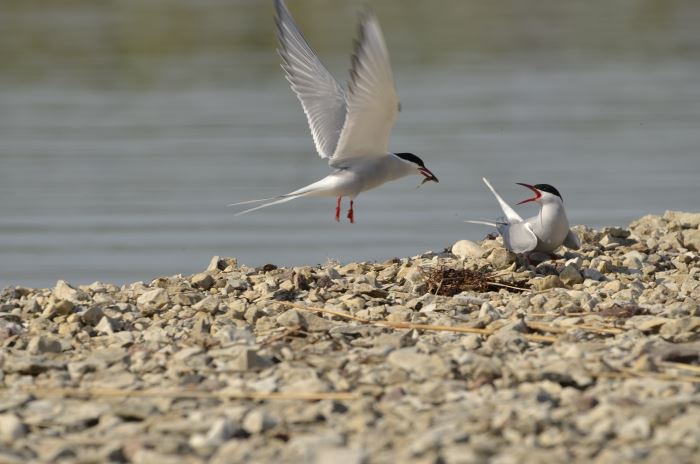About protected area
- The medicinal mud from Käina Bay that has the best quality in Estonia was placed under protection already in 1939. Käina Bay was placed under protection as an ornithological restricted area with a local importance and Kassari island as a restricted landscape area in 1961. The Käina Bay Wild Bird State Reserve was founded on the basis of the ornithological restriction area in 1971. Reigi Island in the bay of Jausa was also a part of the reserve. In 1998, the Kassari Landscape Reserve was united with the Käina Bay Wild Bird State Reserve and the Käina Bay – Kassari Landscape Protection Area was formed.
- Käina Bay comprises about fifth of the whole protection area. 1,000–5,000 birds stop in Käina Bay in the spring time, the amount may be more than four times higher in autumn.
- There are about 15 small islands in Käina Bay. The exact number is dependent on the water level.
- The medicinal mud that can be found in both Käina and Vaemla bays has accumulated during the last 2,000 years. The medicinal mud is being used for medicinal purposes as well as making cosmetic products.
- Kassari that is connected to the island of Hiiumaa with two road dams is the fifth largest island in Estonia. The best-known tourist attraction of the island is the cape Sääretirp – a 2-km-long pebbly peninsula with a direction from the northeast to the southwest.
- The emblem bird of the protection area is the pied avocet (Recurvirostra avosetta) because the first known nesting of this species in Estonia was in the protection area in 1962.
- The most exciting nesters and migrators in Käina Bay and its surrounding areas are the white-tailed eagle (Haliaeetus albicilla), ruff (Philomachus pugnax), Southern dunlin (Calidris alpina schinzii), lesser white-fronted goose (Anser erythropus). You can hear the Eurasian bittern (Botaurus stellaris) here, but also meet the pied avocet (Recurvirostra avosetta), black-tailed godwit (Limosa limosa) and ruddy turnstone (Arenaria interpres).
- One of the most important value from the plants in the protection area is the population of the slender hare’s-ear (Bupleurum tenuissimum) that is the only population extant in Estonia. The pedunculate sea-purslane (Halimione pedunculata) grows well in the coastal meadows here. From the interesting species, also the low spikemoss (Selaginella selaginoides), dwarf mouse-ear (Cerastium pumilum) and small scabious (Scabiosa columbaria) that has become quite rare on the alvars grow here.
- Semi-natural communities are a big value for the protection area. Orchids grow abundantly on these areas.
- Käina Bay with the Hiiumaa Islets Reserve belongs to the internationally important Ramsar Convention of Wetlands since 1997. Käina Bay is an internationally important bird area (IBA). In addition, the whole protection area is a part of the Natura 2000 network and belongs to the West-Estonian archipelago biosphere reserve.
- The manager of the Käina Bay – Kassari Landscape Protection Area is the Environmental Board.

Terns. Photo: Allar Liiv